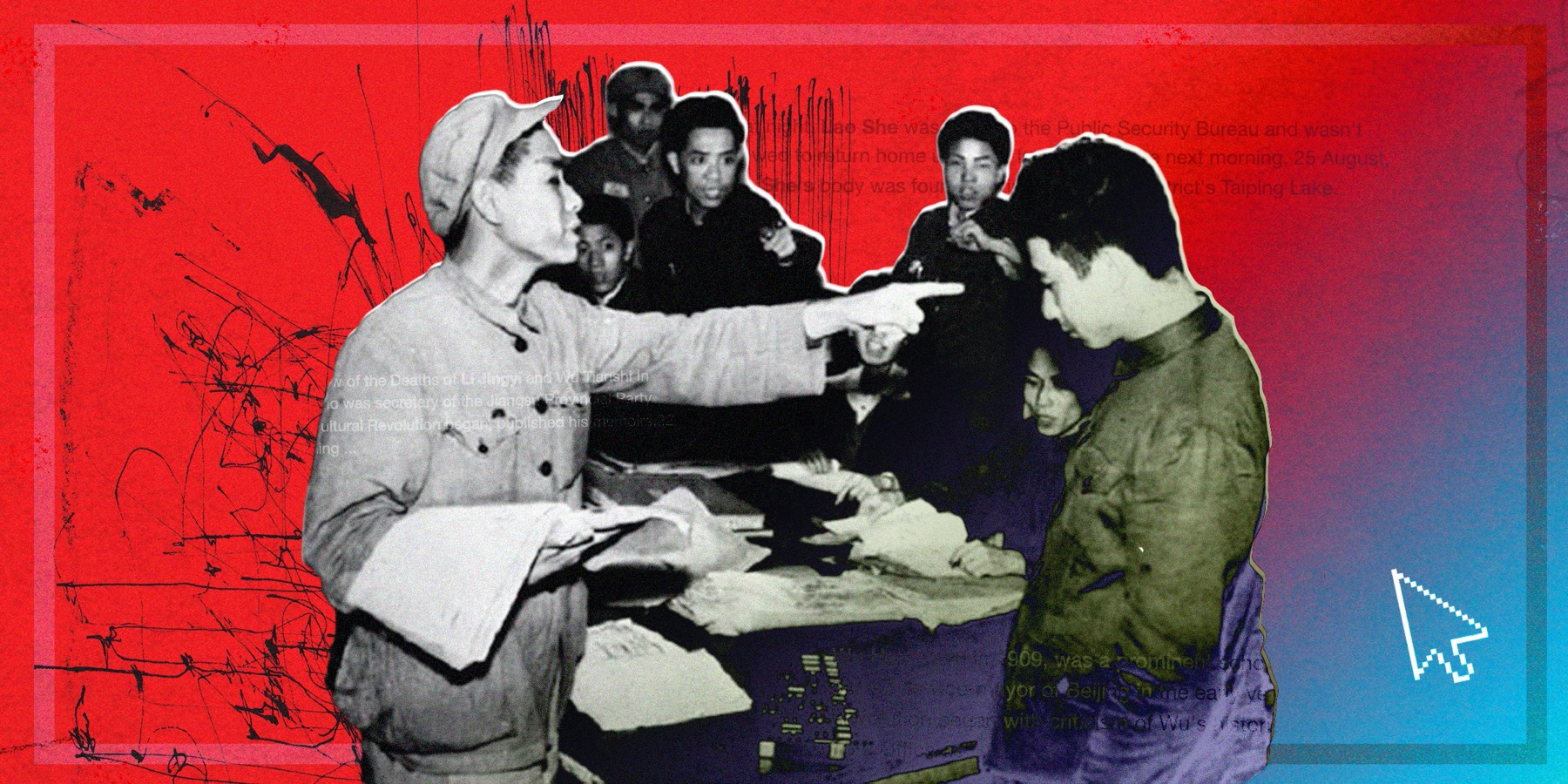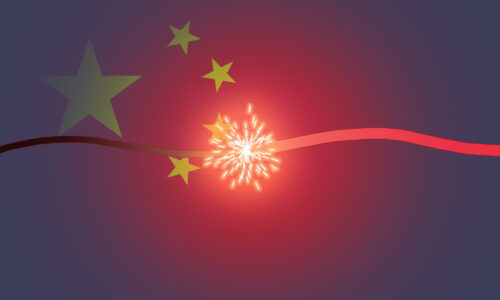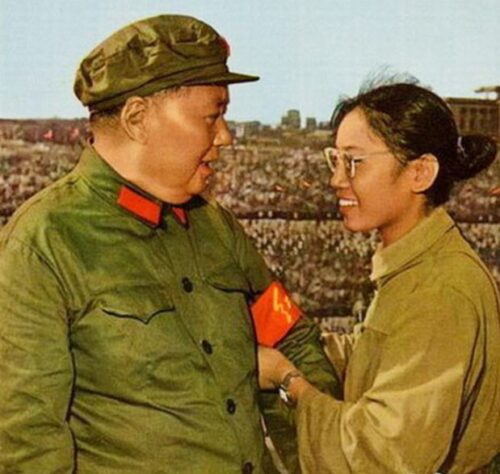
For most of her life, Wang Youqin has strived to document victims of the Cultural Revolution, telling their stories without sentimentality or — in many cases, when the victims were also perpetrators of violence — remorse. For the first time, her work is now available in English.

In 1966, 13-year-old Wáng Yǒuqín 王友琴 watched as some of her classmates at an elite girls’ school in Beijing tortured their teachers. Egged on by the violent directives of the country’s top leaders, the girls forced the teachers to eat dirt, poured boiling water over them, and beat them with spiked clubs. Later, in the school cafeteria, they boasted about it. That night, one of the teachers died of her injuries. Others committed suicide. Some were left crippled.
Horrified, Wang wasn’t sure what to do and kept the experience bottled up. Like many of her peers, she was later forced to labor in the countryside, where she saw the failure of Mao’s revolution to provide farmers with enough to eat. After Mao’s death, she and most other sent-down youth were allowed to return to Beijing. Unable to speak out about the failings of the era, she confronted anguish and guilt in the only way she knew how: by recording the names and details of those who died.
Wang began slowly, by collecting 23 names at Peking University when she attended that school. But she kept at it — for decades — until she had more than a thousand interviews with victims, families, and perpetrators. She began writing essays, then put her material on a website, “Chinese Holocaust Memorial,” detailing hundreds of victims and aggregating her burgeoning number of articles, addresses, and lectures. In 2004, she published much of the material in Hong Kong in a volume with a whopping 520,000 characters (which would be well over 400,000 words in English, or roughly 800 pages).
For years, Wang’s work was accessible only to Chinese readers, but now, thanks to the work of the veteran translator and editor Stacy Mosher, and the publisher Oneworld Academic, it is available in English as Victims of the Cultural Revolution: Testimonies of China’s Tragedy. The new version is abbreviated but still a hefty 600 pages of in-depth stories about some of the best- and least-known victims of the Cultural Revolution. It also features insightful analyses by Wang on why certain groups of people were targeted and what Mao’s faction hoped to achieve by humiliating, torturing, and killing some of China’s most talented people.
The new book is more than a straight-up translation of Wang’s Chinese-language material. As she has for other Chinese counter-historians, such as Yáng Jìshéng 杨继绳 and Tán Héchéng 谭合成, Mosher has abbreviated the work to great effect, taking away some of its encyclopedic nature and duplicative material while also adding new information that Wang collected in the intervening 20 years. The Chinese edition was organized by the victims’ names, like a dictionary, but Mosher has restructured the book thematically and chronologically, with sections on deaths in universities, primary and secondary schools, other early killings, factional struggles, and later campaigns. It isn’t exhaustive — no book can be — but it gives a sense of the enduring nightmare of this period.
Mosher’s editing also gives the book a narrative arc. It now starts with the very first victims (Lǐ Jìngyí 李敬仪, deputy party secretary of Nanjing Normal University, and her husband Wú Tiānshí 吴天石, director of the Jiangsu Province Education Department) during “Red August” of 1966, when waves of killings took place in institutions of higher learning, and then moves logically through the decade of violence.
The only problem that the new edition doesn’t solve is that some of the Cultural Revolution’s most famous victims only appear in the middle of the book. That’s true for Biàn Zhòngyún 卞仲耘, Wang’s teacher, who was killed in 1966, whose story is only told more than 100 pages in. This is more than offset, however, by Wang’s passionate description of the woman’s death. At 20 pages, Wang’s account also dwarfs many other efforts at telling the gruesome story. It also takes issue with gentler accounts, such as Carma Hinton’s 2003 documentary film Morning Sun, which allows some of the likely perpetrators to tell their story as if they were solely victims.
For Wang, the story is clearly cathartic, and at times her anger boils through. She points out that the only person to offer condolences to Bian’s widowed husband, Wáng Jīngyáo 王晶尧, was the school’s mentally and physically disabled handyman. He had loaded Bian’s body on a wheelbarrow and was able to tell the grieving father and children much of what had happened. “It puts all the others to shame,” she writes, “that the only person from the Girls’ School who went to Bian’s home to express condolences was this humble working man.”
Wang’s direct experience at the school gives her insights that make the death all the more horrific. She points out that Bian wasn’t just any teacher but taught at the most prestigious girls’ school in Beijing. For years, she had dutifully followed party directives, making her school, Beijing Normal University Affiliated Girls’ Secondary School, a trusted place for the elite’s children. Her students included the daughters of many top leaders, including Máo Zédōng’s 毛泽东 daughter, Lĭ Nà 李讷.
Yet, once the revolution needed a target to attack, these senior cadres were able to turn their back on their loyal subordinates, transforming them into scapegoats in service to the goal of revolution. This callousness was a hallmark of the Cultural Revolution, which virulently attacked not only its opponents but even those who had never voiced the slightest opposition.
And yet, Wang does not romanticize the victims. One of her constant themes is how many of the victims had been perpetrators. This is especially true of one of the most famous early victims of the Cultural Revolution, the former vice mayor of Beijing, Wú Hán 吴晗. It was an attack on a historical play that Wu wrote that is sometimes identified as the formal start of the Cultural Revolution. Wu was tied to a tree, beaten with brass belt buckles, denounced, and “struggled” against at more than 100 rallies, and died in prison in 1969. His wife also died in prison, while their adopted daughter became mentally ill and committed suicide.
As Wang notes, Wu had been a loyal apparatchik, attacking people during the Anti-Rightist Campaign. “Some say Wu Han ‘got what he deserved’ because he had persecuted others and had carried out the principles of persecution that were ultimately turned against him and his family members.”
She is also unsparingly clinical in her description of the sad fate of one of China’s greatest novelists, Lǎo Shě 老舍, who was tortured and humiliated for days on end until he went to the shore of a small lake in Beijing and sat there for hours before drowning himself. So unsentimental is Wang that she can’t help but mention that in early writings, Lao She also celebrated the sort of “struggle sessions” that would be later used against him. She wonders, as Lao She sat there on the lakeshore before taking his life, if he had contemplated “the responsibility he bore for praising this kind of struggle method, which in the intervening fifteen years had affected not only strangers, but even his colleagues and acquaintances, and ultimately himself as well.”
Wang’s tough love hasn’t always gone over well in China. After getting her doctorate in literature from the Chinese Academy of Social Sciences in 1988, she moved to the United States to teach Chinese language at Stanford University and then at the University of Chicago, where she works today as a senior instructor.
A combination of her overseas affiliation and uncompromising attitude has put her at the center of several controversies. Most notably, she was a sharp critic of Sòng Bīnbīn 宋彬彬, who attended the same school as Wang, and who Wang holds partially responsible for the murder of their teacher. Song and some Cultural Revolution researchers inside China have accused Wang of acting morally superior while ignoring the complexities of that era. Wang has responded by demanding that her critics cite errors in her work.
These debates highlight an important trend — the increasing ties between Chinese scholars and observers inside the country and those overseas.
In the past, the two inhabited distinct worlds. Those inside China had narrower boundaries for what they could publish, but their work often had more impact in Chinese society. Their words, though censored, were more likely to be carried on social media and influence public opinion. Those outside China were largely cut off. They could publish freely but rarely moved the needle inside China.
Wang and her book show how these two realms have gradually melded into one. While the two groups are not completely unified, their work and thoughts bleed into the other’s sphere. This is largely due to the ubiquity — among intellectual circles — of VPN software, which makes it easy for Chinese inside China to read what is published overseas and to respond. This has created a dialogue between grassroots researchers inside China and those outside, like Wang Youqin.
The broader significance of this book and these developments is that the Chinese Communist Party has not been able to erase or control history the way it would like. Overseas scholars like Wang now feed into a broad discussion in China, challenging the Chinese Communist Party on its most sacred ground: its control of history.
Ian Johnson’s new book, Sparks: China’s Underground Historians and their Battle for the Future, will be published on September 26 by Oxford University Press in the United States and Canada, and by Penguin Books in the U.K. and Asia.






